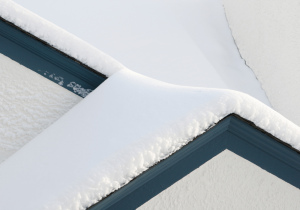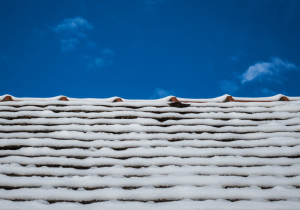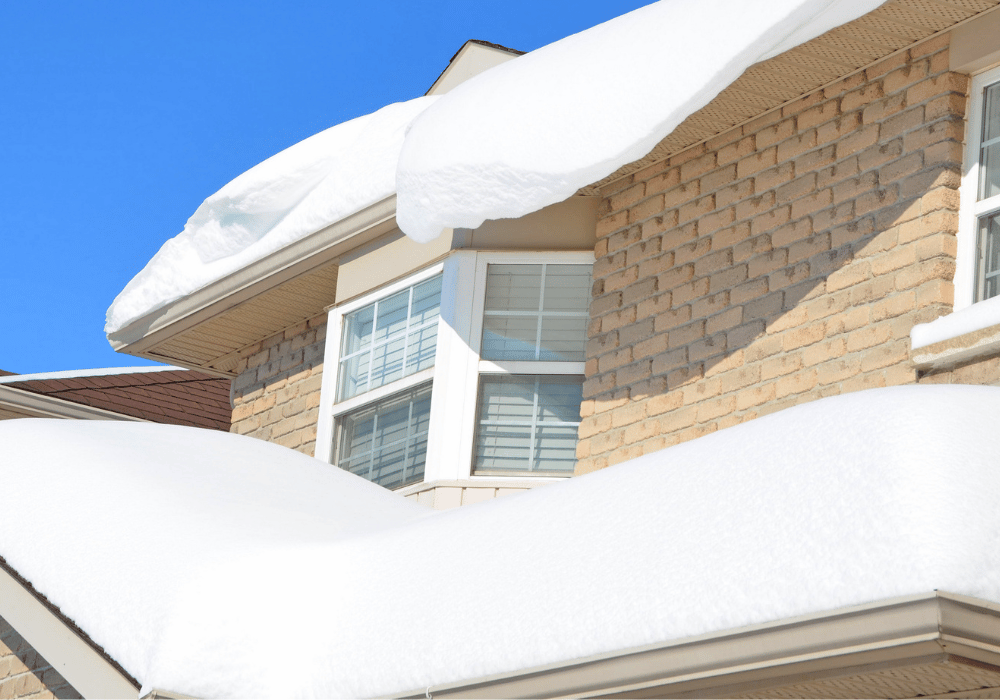People depend on their roofs to shield them from dangerous weather conditions, along with their home. This is especially true in the winter, when severe weather might occur at any time. Snow and ice may shorten the lifespan of a roof because winter is one of the worst seasons for them. Understanding how this may impact your roof’s structural stability can help you maintain your roof in excellent shape for years to come.
Common Types Of Roof Damage From Snow or Ice
Common Types Of Roof Damage From Snow or Ice
Leaks

Melting snow or ice can seep between cracks, tiles, or shingles and cause water to leak into your home. Look for signs of water damage, water dripping, or leaking from the ceilings.
Ice Dams
These form at the edge of a roof when warm air from the attic melts snow, which then refreezes once it hits colder areas like eaves or gutters. This dam can stop melting snow from draining off the roof, which can cause excess water to back up beneath the shingles.
Damage To Roofing Materials
Snow and ice can also cause physical damage to roofing materials like shingles, tile, and slate. This includes cracking, chipping, splitting, and warping due to freezing temperatures.
Structural Damage
Heavy loads of heavy wet snow or ice can collapse or affect the structure of your roof. This is especially true in older structures with drooping or sagging rafters. Get in touch with a licensed roofer to inspect your roof for structural issues before the damage gets worse. A professional roofing company will give you an accurate price estimation and plan, so your roof will be repaired effectively.
How To Prevent Snow & Ice Damage On Your Roof
Taking steps to minimize the risk of snow and ice damage on your roof is essential for it to last longer without needing costly repairs or replacements.
- Inspect your roof after each storm. Remove any debris that may have accumulated during the storm by using a rooftop rake or broom-type tool from the ground.
- Clear away snow when necessary by using an appropriate roof rake. Be sure to use a long-handled tool with a plastic blade and never climb up on the roof for this task.
- Make sure your gutters and downspouts are clear of debris so melting snow can drain away from your home.
- Inspect your attic to make sure it is properly insulated. This will help keep warm air from melting snow on your rooftop, leading to ice dams or other damaging conditions.

- Replace any damaged shingles, tiles, or slate before winter arrives in order to protect them from potential damage caused by heavy snowfall or freezing temperatures.
By taking the necessary precautions, you can make sure your roof is well-protected from winter weather and avoid costly repairs or replacements in the future. Taking these steps will help ensure that your roof lasts for many years to come, and keeps you comfortable. If you have any questions about your roof during the winter, please contact Armour Shield Roofing now.
Armour Shield Roofing strongly discourages homeowners from going up and down ladders or doing repairs on their roofs. The accidents and fatalities sustained by untrained individuals are tragic and avoidable by calling a professional roofing contractor.

